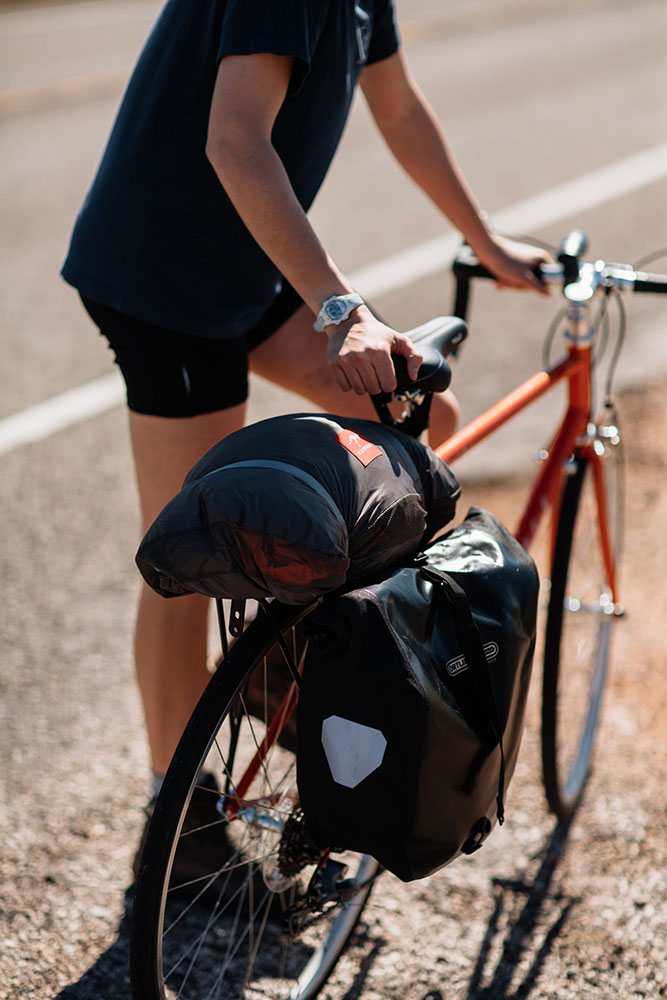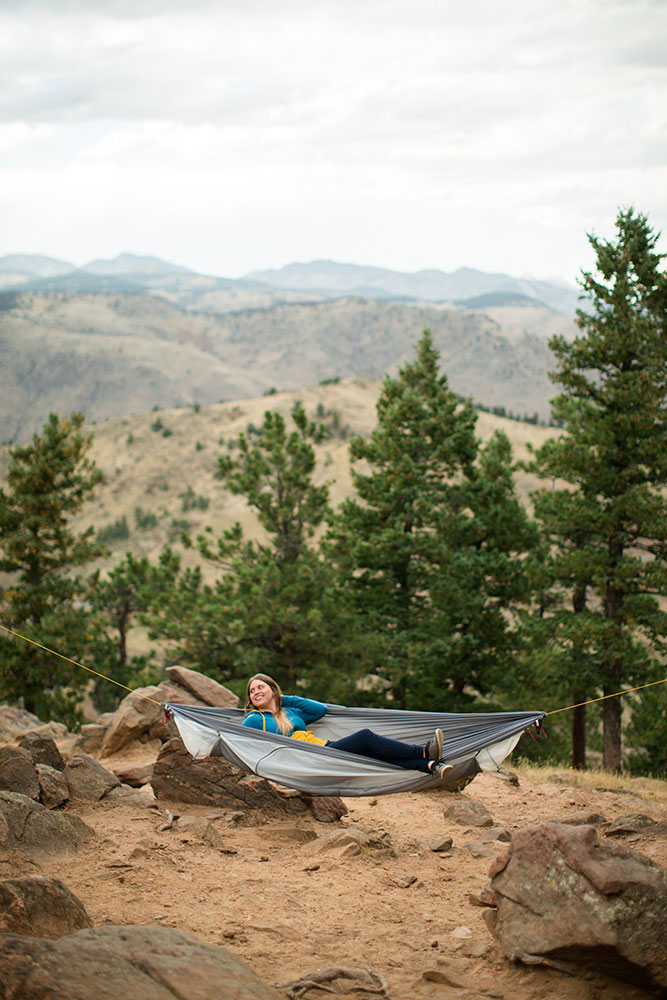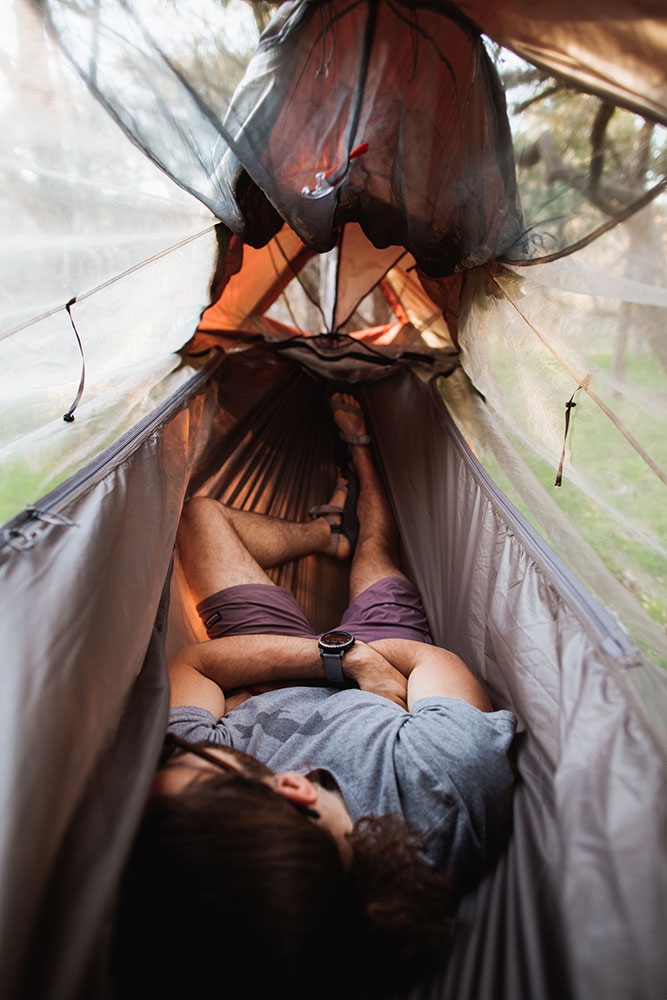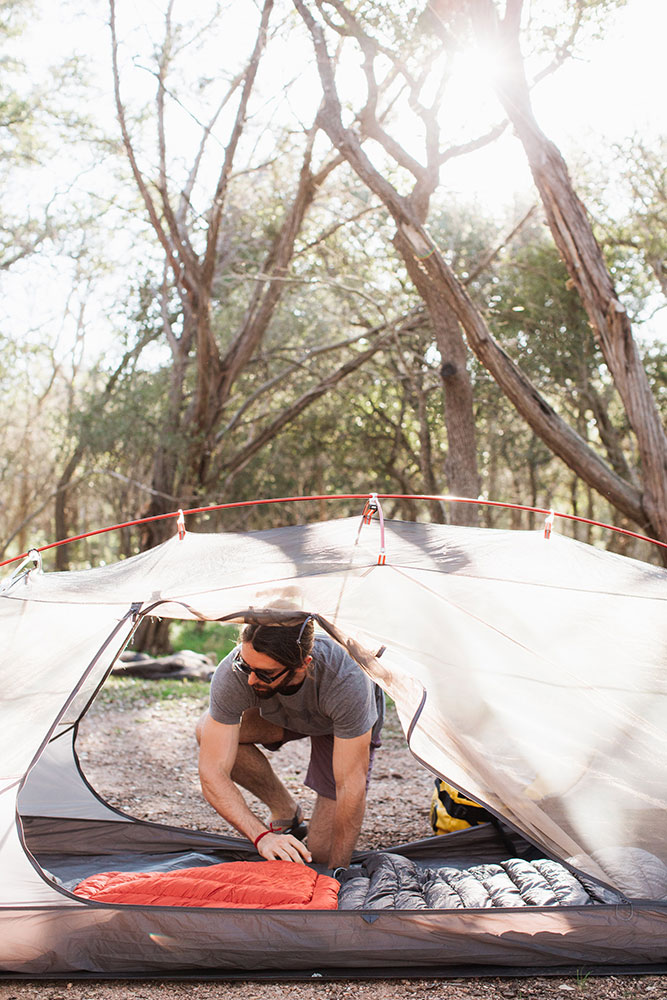Back in 2009, during a four-night whitewater rafting trip, Greg McEvilly fell in love with hammock camping.
It was the perspective change,” he tells Digital Trends, “both figuratively and literally.” Apparently being suspended between two trees not only provided him with a different outlook on his surroundings, it changed is view of the world. It was also really comfortable. “At times I sleep better in a hammock than I do on my memory foam mattress at home,” he says.
This time spent in a hammock proved to be a life-changing event for McEvilly. In 2010, he left a lucrative career in commercial real estate to start his own company — by himself mind you — designing products that would help others experience the same transformation he had undergone; Kammok, and its eponymous first product (a camping hammock of course) were born.
The Kammok proved to be what a lot of people wanted, earning McEvilly over $200,000 in revenue on Kickstarter, every penny of which he used to fulfill the thousands of international orders the Kammok had raked in. Stoked by his success, McEvilly went on to do two more equally successful crowdfunded projects over the following years: The Glider, a rain tarp designed to protect users of the original Kammok against the elements, and Thylacine, a sleeping bag. At this point, angel investors started to take note of Kammok’s momentum and growing community of supporters — who McEvilly calls his “mob” — and injected enough capital that Kammok was able to add its first employees and give its founder a salary (finally).
Today, McEvilly and Kammok are taking what appears to be the next logical step in their evolution, with the Sunda, a $399 two-person tent that can convert in a few minutes to a one-person hammock, for that all-important perspective change. “We reached out to our mob to find what additional products they’d like to see,” McEvilly says, “and the top response was a tent hammock. People really wanted that versatility.” Unlike the original Kammok, the Sunda can keep you completely protected when in hammock mode — the frame-based tent canopy is designed to swing with you, or not, it’s your choice. There are other products on the market that can be both a tent and a hammock, but none that could accommodate a second person (or a lot of gear) in tent mode, which McEvilly sees as a key differentiator.
However, it’s the Sunda’s extreme versatility that is likely to appeal to most potential buyers. With a total of four configurations, which vary in weight from just over one pound, to a maximum of just under five pounds, it’s hard to imagine a camping scenario the Sunda couldn’t handle. Hammock mode lets one person kick back and relax between two trees (or any two load-bearing supports). Fly-light mode is perfect for sun and rain protection, when you’re not concerned about bugs, and has the benefit of not sharing any parts with Hammock mode, so you could set both up simultaneously. The All-in-one hammock mode uses the Sunda’s structure poles to create a floating one-person hammock with a structured tent roof. Finally, the two-person tent mode is a traditional ground tent, complete with fly and a separate footprint, something which McEvilly says is rarely included with tents at this price point.
“There isn’t a single feature we think is missing or something we wish we’d added in.”
There’s no shortage of thoughtful design touches either, with lots of storage compartments, overhead hooks and loops for lighting or other accessories — Kammok even made a point of using highly reflective surfaces on the interior to maximize the distribution of light within the tent. Ruggedness and waterproofing are often two areas where lower caliber tents fail to meet expectations, but here too, the Sunda looks like it has what it takes, with taped seams and YKK zippers throughout.
To see if the Sunda checks all the boxes for a serious camper, Digital Trends reached out to Steve Silberberg, owner and chief guide at Fitpacking, a Massachusetts-based company that organizes week-long hiking and camping trips as way to kickstart weight loss, and possibly enjoy the same perspective change that so inspired Greg McEvilly.
“Overall, it looks like an excellent product,” Silberberg says after looking at the Sunda’s campaign page. “It would be great for weeklong excursions,” he says, especially on trips where you intend on hammocking most of the time but want the ability to pitch a full tent when it’s needed. Silberberg also appreciates that the Sunda manages to offer so much interior space and height too: “I like that it’s not a coffin.” This would no doubt make McEvilly smile — one of the Sunda’s primary design goals is something he refers to as “liveability.”
The Kammok team looked beyond floor space, which can be a deceiving metric if the walls of a tent immediately slope toward the roof’s apex. “If the peak height is low, or walls angle in too much,” he says, “that’s not really liveable space.” A consistent sit-up height of 40 inches across the length of the Sunda makes it much more liveable than other designs, McEvilly says.
Some might wonder if a product that seeks to offer multiple functions can truly be good at all of them, or is mediocrity the price of convenience? “That’s the big question isn’t it?” Silberberg agrees. “I am unaware of any hybrid product that performs better than two separate products, except in weight savings,” he observes. The Swiss Army knife analogy comes to mind, but McEvilly bristles at the comparison. “We don’t think that’s the best analogy for Sunda,” he says.
In designing the Sunda, Kammok focused on making the best two-person tent, first and foremost according to McEvilly. In fact, the team tossed out an early blueprint for the product that started with the hammock as the central feature — they just couldn’t make it a great tent — and went back to the drawing board to start with the tent, which they feel resulted in the best final product. “We’ve left nothing on the table,” McEvilly claims. “There isn’t a single feature we think is missing or something we wish we’d added in.”
Judging by the success of their Kickstarter campaign, it looks like the Kammok mob agrees — with 28 days left on the campaign, the company is already well over its $75,000 goal. With over 500 backers so far, it’s looking like this will be their biggest success to-date — a perspective we’re pretty sure Kammok’s angel investors will appreciate.







